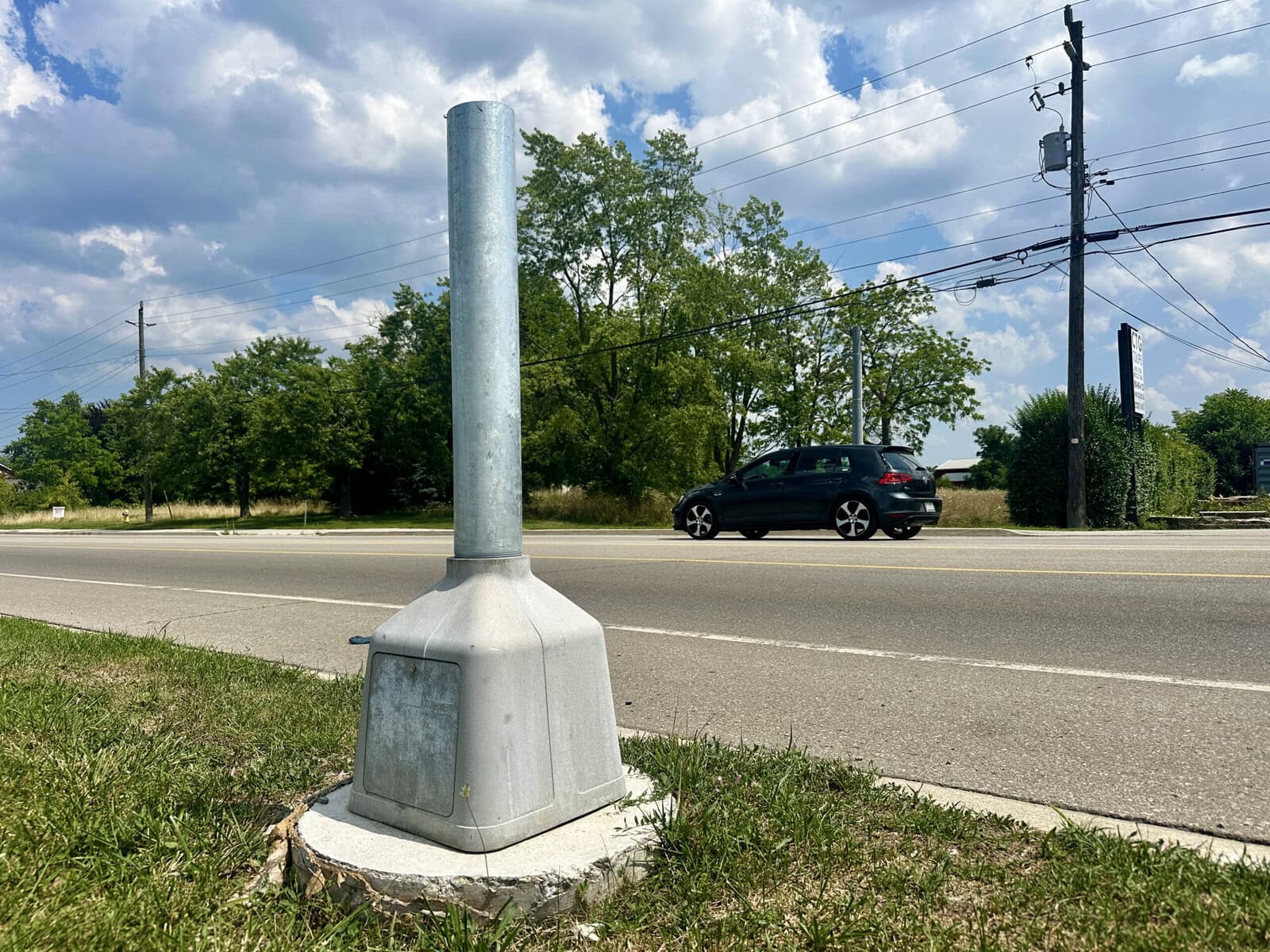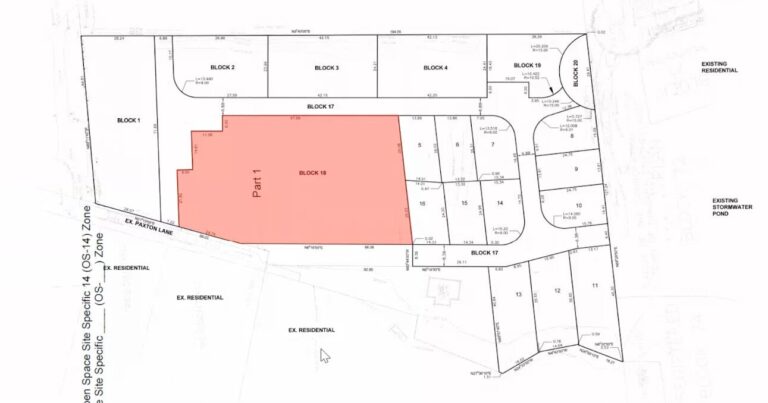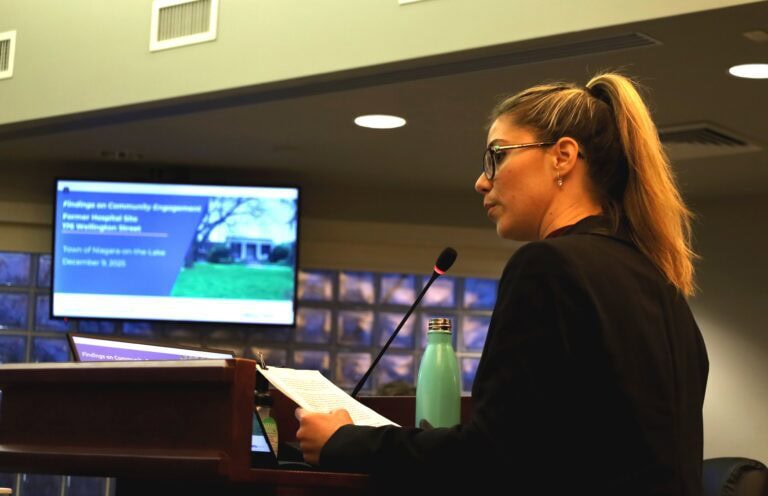Despite being vandalized and removed, the Niagara Stone Road speed camera is still on this season’s enforcement schedule and expected back before the program ends later this month, the Niagara Region says.
Both the region and Niagara Regional Police would not say where the automated speed enforcement camera is now, who removed it, or how much repeated vandalism at the site has cost.
They confirmed the eight cameras in the program cost about $245,000 this year and that ticketed fines have, so far, covered all expenses.
Scott Fraser, the region’s associate director of transportation planning, confirmed the unit was damaged but said it’s still going to be used for the May-to-August program cycle.
The camera is meant to be stationed in front of Crossroads Public School in Virgil until late this month.
He said the region is working with the vendor, Redflex Traffic Systems (Canada) Limited, to repair it and return it to service.
“The camera has not been relocated, or the rotation ended early, in response to vandalism,” Fraser said in an email.
Details “specific to the acts of vandalism, such as the individuals involved, or the potential charges and related penalties,” he said, are part of a regional police investigation.
Police declined to answer questions and referred inquiries back to the region.
The region also would not disclose how many tickets the camera issued, how long it was active during this rotation, how often it was vandalized or replaced, whether relocation is being considered, or how much fine revenue it generated this season.
Fraser said the region will present information on the “safety benefits” the automated speed enforcement program saw this year to regional council next year.
The camera is one of eight supplied under an annual contract with the vendor, which Fraser said includes the cost of repairing or replacing units damaged or vandalized.
He said all program costs, including signage and ticket processing, are covered by fines.
“Net fines collected are then shared between the region and local area municipalities and are reinvested into road safety improvements,” said Fraser.
While some drivers have questioned whether the program puts revenue ahead of safety, Fraser, speaking more broadly, pointed to 2024 results showing average speeds dropped by nine kilometres per hour where cameras were used and violations fell 86 per cent at locations where cameras returned a second time.
“And speeds remained low — even after the cameras were removed,” he said.
Fraser said “moderate changes in speed make a big difference in safety” and that changing speed is key to reducing serious collisions, injuries and fatalities.








